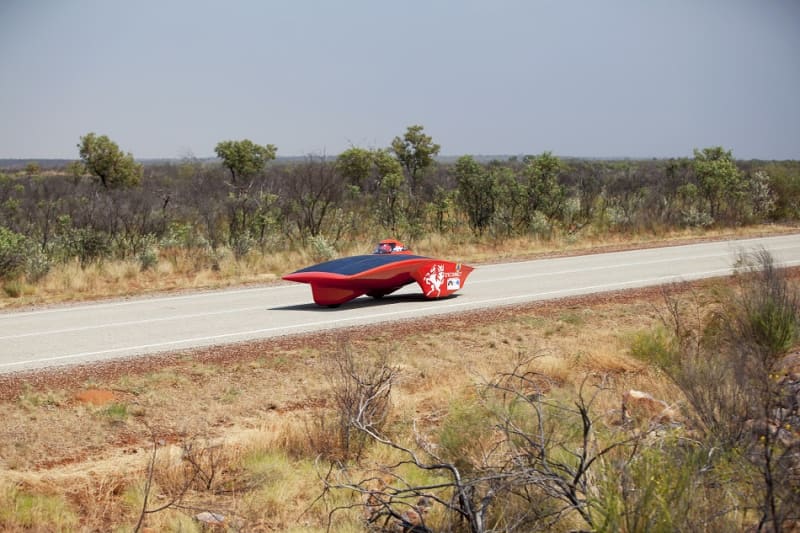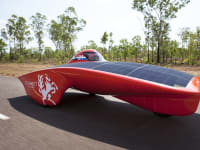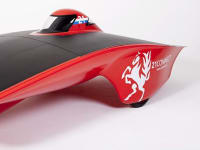This design is all about sustainable personal transportation and maximized energy efficiency without relying on non-renewable energy sources like fossil fuels. The fuel for driving this vehicle is extracted from sunlight by high efficiency but conventional silicon solar cells, which you may even find on your neighbours rooftop. The sunlight is converted into electrical energy which is used directly for driving the car or is stored in the lithium battery pack in case of a surplus of energy. That’s right, this car may very well reach a velocity of 80 km/h and still produces a surplus amount of energy due to the extremely high energy efficiency >90% and the extremely low energy expenditure due to a lightweight carbon monocoque structure and an optimized low-drag aerodynamic shape. The car requires the same amount of energy as a conventional hair dryer to drive at 80 km/h.
Aerodynamic drag accounts for 80% of the car’s energy expenditure when driving 80 km/h which explains the design focus of this vehicle. The innovation in the aerodynamic shape of the vehicle results from the use of airfoil shapes commonly used for gliders and in the wind turbine industry. The general concept is to have a favourable and smooth pressure distribution on the car’s surface in order to create an extremely low drag vehicle. This is achieved by compensating the space required by wheel covers underneath the car by creating “dents” inside the body in order to reduce the pressure drop of the accelerated airstream underneath the car. Furthermore a very smooth surface is created by covering the carbon structure with a tight foil, which is finished with a coating technique mainly used in the aircraft industry to maximize laminar flow; the foil may potentially decrease aircraft fuel consumption by 30%.
The car has already been produced to compete in the prestigious 3000 km World Solar Challenge in Australia in 2011 in which it has proven its energy efficiency and durability. Although the production of this “prototype” was mostly done by manual labour there are significant advantages for series productions. The moulds which are used to laminate the carbon structure of the car can be used to accommodate the production of multiple structures, thereby reducing production costs significantly per produced car. Material costs can also be expected to drop due to economies of scale.
In terms of marketability numerous image related benefits may be utilized by using this zero-emission car for promotion of renewable technologies. Although the upfront investment costs of this car are still significant (magnitude of hundreds of thousands of euro’s), they will likely decline by economies of scale if multiple productions are considered. Moreover, once the upfront costs of this car are covered, it means no more paying at fuel stations and the car is likely to be excluded from any road taxes. In the framework of climate-change, decreasing fossil fuel reserves, greenhouse gas emissions and increasing energy prices the SPUSPTV driver rides for free.
(foto's by Gijs Versteeg)
Like this entry?
-
About the Entrant
- Name:Joost Mulder
- Type of entry:teamTeam members:Barry Vree
- Software used for this entry:Ansys CFX, SolidWorks
- Patent status:none








